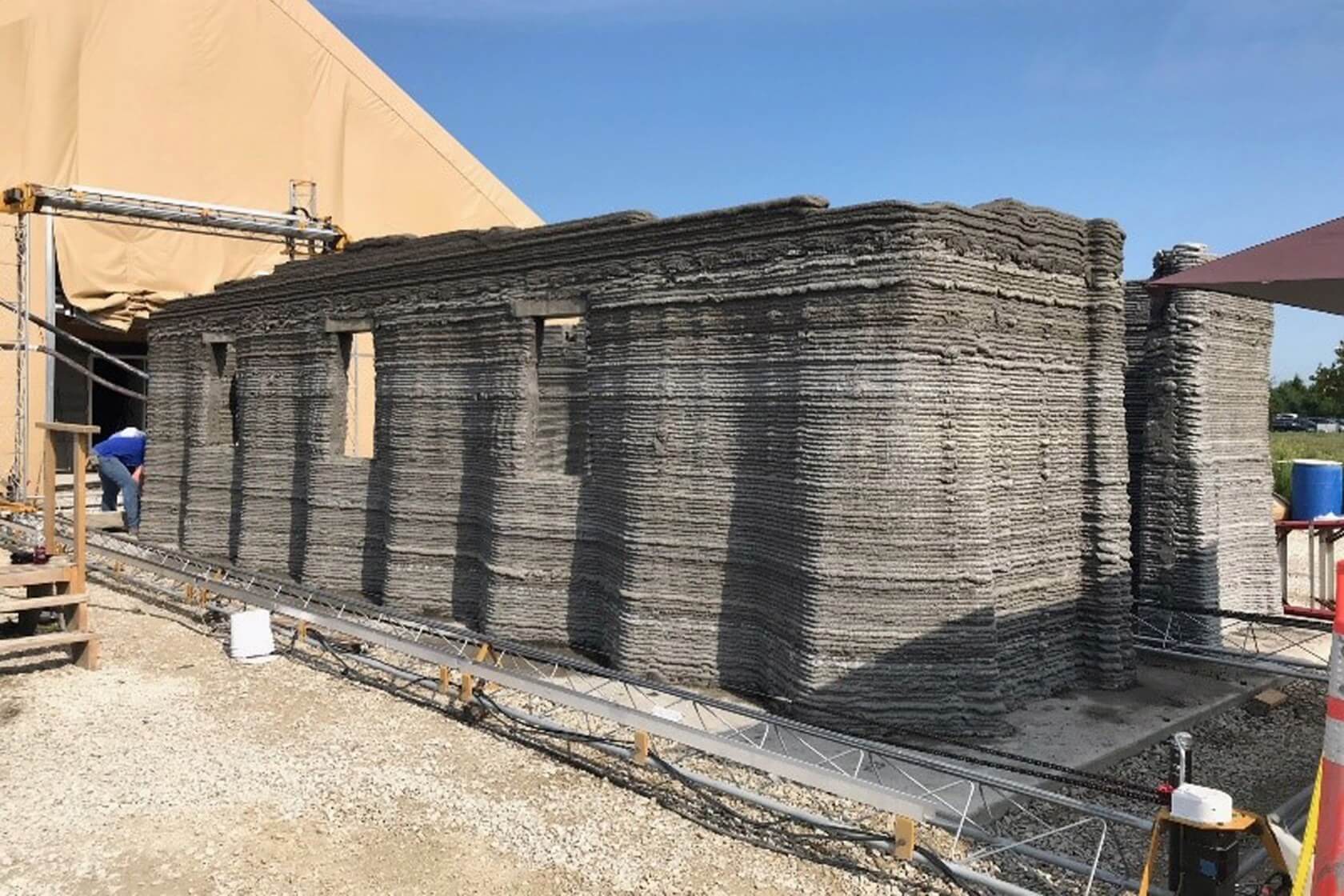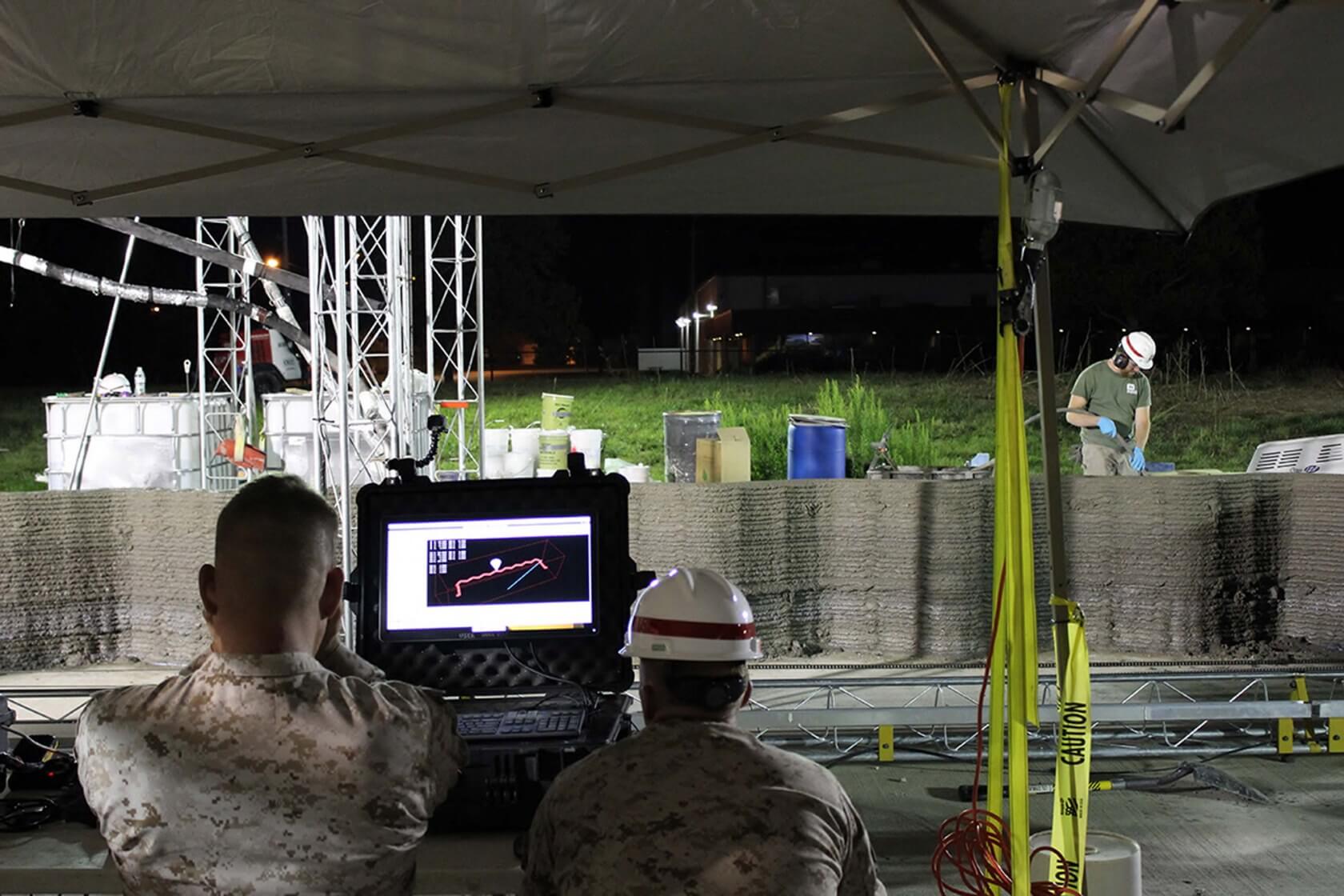Recap: Using a huge 3D printer the MCSC, Seabees, and Marine Corps were able to create a continuous 500-square-foot barracks to house personnel. Project heads say that the tech could be used to build shelters during disaster relief efforts. It will also be employed to keep soldiers out of harm's way and free them up for other battlefield tasks.

Last month we reported on how researchers had used multiple mobile robots to print a large scale concrete structure. The continuous construct was maybe a foot high and several feet long. The United States Marines apparently got wind of the effort and said, “Here. Hold our beer."
The Marine Corps Systems Command (MCSC) reports that it has constructed the “world’s first continuous 3D-printed concrete barracks." The feat was a joint effort between the MCSC’s Additive Manufacturing Team (AM), the I Marine Expeditionary Force, and the US Navy Seabees using the largest 3D concrete printer in the world located at the US Army Engineer Research Center in Champaign, Illinois.
The 500-square-foot structure was built in just 40 hours. By way of comparison, it usually takes a team of 10 Marines five days to construct a barracks out of wood. It only took four people to operate the printer, and that was just because two were needed to mix the concrete. There are plans in the works to employ robots to do the mixing in the future.

"In active or simulated combat environments, we don’t want Marines out there swinging hammers and holding plywood up," said MCSC Captain Matthew Friedell, who led the AM project. "Having a concrete printer that can make buildings on demand is a huge advantage for Marines operating down range."
The technology is not only useful for constructing housing for soldiers. Friedell says that the Navy and Marine Corps are usually the first military personnel on-site at natural disasters. While handing out food and water is not all that complicated, providing shelter for disaster victims is challenging, if not impossible. The technology would allow them to fabricate houses, schools, and community centers quickly during disaster relief missions.
"This capability [large-scale 3D printing] would enable a great partnership with the local community because it is low cost, easy to use, and robotics could print the buildings," said Friedell. "We can bring forward better structures, houses, and forward operating bases with less manpower and fewer Marines in harm’s way."
Engineers are still working on and testing the system to make it more, if not fully, autonomous.
https://www.techspot.com/news/76389-us-marines-construct-world-first-3d-printed-barracks.html